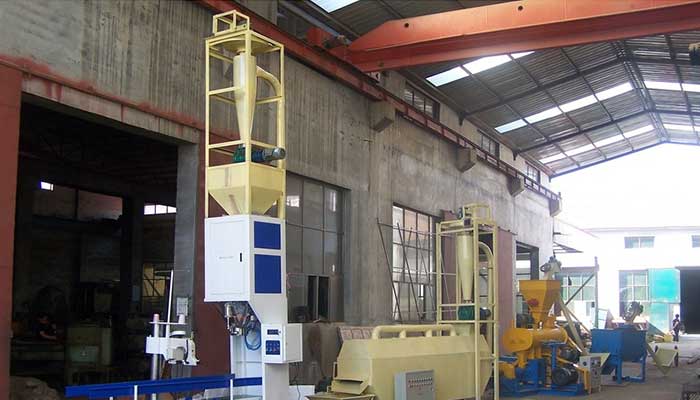Overhead Cranes for Material Handling in Pellet Machinery Plant
Overhead crane for sale, custom overhead travelling cranes for pellet machinery manufacturing factory, hot sale 0.5 ton to 50 ton. Check now.
A Comprehensive Guide to Overhead Cranes in Pellet Machinery Manufacturing Plants
Overhead cranes serve as the backbone of material handling operations in pellet machinery manufacturing plants. They play a pivotal role in lifting heavy loads, transporting raw materials and machinery components, and facilitating the smooth flow of production. Without overhead cranes, the efficiency and productivity of pellet machinery plants would be significantly hindered.
Throughout this series, we'll explore various aspects of overhead crane usage in pellet machinery plants. From understanding the different types of cranes commonly used to examining their components and operation techniques, we'll cover everything you need to know to maximize the effectiveness of overhead cranes in your plant.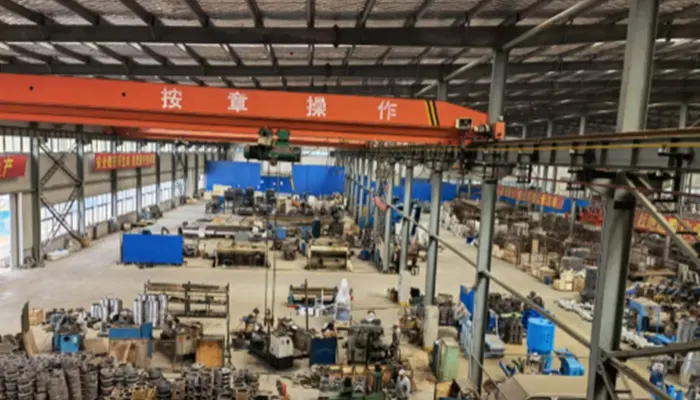
Overhead Cranes for Pellet Machinery Plants
Overhead cranes are indispensable lifting equipment utilized in manufacturing environments to transport heavy loads with efficiency and precision. These cranes are designed to traverse overhead runways or rails, allowing for the movement of loads across a designated area.
Common Types of Overhead Cranes:
Single Girder vs. Double Girder:
- Single girder cranes feature a single bridge girder supported by end trucks, offering costeffective solutions for light to moderate lifting applications.
- Double girder cranes, on the other hand, boast two bridge girders supported by end trucks, providing higher lifting capacities and greater stability, making them ideal for heavyduty operations.
Top Running vs. Under Running:
- Top running cranes run along rails mounted on the top of the building's columns or roof structure, offering efficient material handling solutions with increased lift heights.
- Under running cranes, also known as underhung cranes, operate on rails mounted beneath the runway beams, making them suitable for applications with limited overhead clearance.
Bridge, Gantry, and Jib Cranes:
- Bridge cranes traverse horizontally along elevated runways, offering versatility and coverage across large areas within the manufacturing facility.
- Gantry cranes, supported by legs on the ground, provide flexibility in installation and are ideal for outdoor applications or areas with limited overhead clearance.
- Jib cranes consist of a horizontal boom attached to a vertical support pillar or wallmounted bracket, offering a compact solution for specific work areas or tasks within the plant.
Pellet Machinery Overview
In this section, we'll provide an overview of pellet machinery, including its components, production procedures, and the significance of efficient material handling in maximizing productivity.
Components of Pellet Machinery:
Pellet machinery consists of various components essential for the pelletizing process:
- Pellet Mills: These machines play a central role in pellet production and comprise rollers, dies, feeding systems, gearboxes, and motors.
- Types of Pellet Machines: There are different types of pellet machines tailored for specific applications, including feed pelletizers, wood pellet mills, and biomass pelletizers.
Production Procedures in Pellet Machinery Manufacturing:
The production process in pellet machinery manufacturing typically involves several stages:
- Raw Material Preparation and Handling: Raw materials such as wood chips, sawdust, or biomass are processed and prepared for pelletization.
- Pelletizing Process: The prepared raw materials are fed into pellet mills, where they undergo compression and extrusion to form pellets of the desired size and density.
- Cooling, Screening, and Packaging: The freshly produced pellets are cooled to reduce their temperature and moisture content, screened to remove any fines or impurities, and finally packaged for distribution or storage.
Importance of Efficient Material Handling:
Efficient material handling is paramount in pellet machinery plants for several reasons:
- Smooth Production Workflows: Proper material handling ensures the seamless flow of raw materials, machinery components, and finished products throughout the production process, minimizing downtime and maximizing throughput.
- Maximizing Productivity: By optimizing material handling processes, pellet machinery plants can enhance productivity and meet production targets efficiently.
- Ensuring Product Quality: Effective material handling helps maintain the integrity and quality of pellets, reducing waste and ensuring consistent product standards.
The components, production procedures, and importance of efficient material handling in pellet machinery plants is essential for optimizing operations and achieving peak performance.
Factors to Consider When Selecting Overhead Cranes
In this section, we'll explore the key factors that pellet machinery plants should consider when selecting overhead cranes to ensure optimal performance and safety.
- Load Capacity Requirements: Pellet machinery plants must assess the load capacity requirements for different parts of the machinery, taking into account the weight of raw materials, machinery components, and finished products. Choosing cranes with sufficient lifting capacity is essential to handle these loads safely and efficiently.
- Span and Coverage Area: The span and coverage area of overhead cranes should be carefully considered to accommodate various production processes and facilitate seamless material flow within the plant. Cranes with adequate span and coverage ensure that materials can be moved efficiently throughout the facility, minimizing bottlenecks and optimizing workflow.
- Lift Height and Hook Approach: The lift height and hook approach of overhead cranes are critical factors in loading and unloading pellets and machinery components safely and efficiently. Cranes with adjustable lift heights and versatile hook approaches can adapt to different material handling tasks, maximizing flexibility and productivity.
- Operating Environment and Conditions: The operating environment and conditions within the pellet machinery plant, including temperature, humidity, and potential hazards, must be taken into account when selecting overhead cranes. Cranes should be designed and equipped to withstand the specific conditions of the plant environment, ensuring optimal performance and longevity.
- Frequency of Use and Duty Cycle: The frequency of use and duty cycle of overhead cranes should be considered to select appropriate crane specifications that match production demands. Cranes that are designed for heavyduty use and frequent operation are essential for maintaining efficiency and productivity in highvolume production environments.
- Integration with Existing Plant Infrastructure: Integration with existing plant infrastructure, including layout and space constraints, is crucial when selecting overhead cranes. Cranes should be strategically placed to optimize material flow and minimize disruptions to production processes. Additionally, consideration should be given to compatibility with existing infrastructure and the ability to accommodate future expansion or modifications.
By carefully considering these factors, pellet machinery plants can select overhead cranes that meet their specific operational needs, ensuring smooth material handling and maximizing productivity. Stay tuned for the next part of our guide, where we'll explore overhead crane operation for pellet machinery handling in greater detail.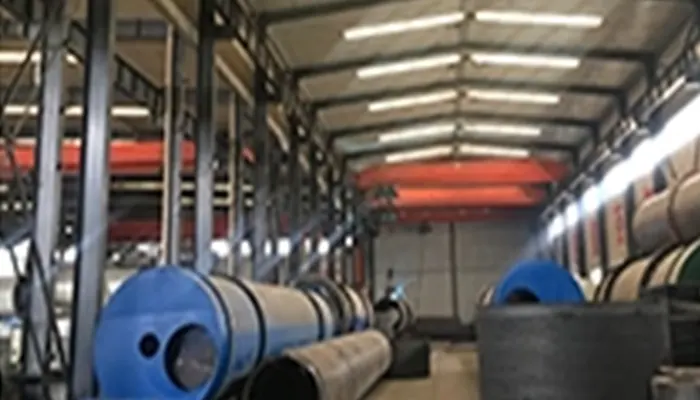
Overhead Crane Operation for Pellet Machinery Handling
Material Handling Considerations:
Different parts of pellet machinery require specific material handling considerations:
- Raw Material Intake and Storage: Overhead cranes play a crucial role in efficiently transporting raw materials such as wood chips, sawdust, or biomass from intake areas to storage facilities within the plant.
- Machinery Component Handling: Cranes are used to lift and maneuver heavy machinery components, including rollers, dies, and gearboxes, during assembly, maintenance, and repair processes.
- Finished Product Handling: Cranes are utilized for loading and unloading finished pellets from pellet machines, as well as transporting packaged pellets to storage areas or shipping docks.
Crane Operation Techniques:
To ensure safe and efficient material handling, crane operators should employ proper operation techniques, including:
- Proper Load Attachment: Ensuring that loads are securely attached to the crane's hoist or lifting attachment to prevent accidents or damage to materials.
- Controlled Movement: Operating cranes with precision and control to maneuver loads smoothly and avoid collisions or disruptions to production processes.
- Communication: Maintaining clear communication between crane operators and ground personnel to coordinate material handling tasks effectively and ensure safety.
Role of Overhead Cranes in Optimizing Production Procedures: Overhead cranes play a crucial role in optimizing production procedures within pellet machinery plants by:
- Facilitating Continuous Material Flow: Cranes enable the continuous flow of materials between different stages of the production process, minimizing bottlenecks and maximizing throughput.
- Supporting JustinTime Delivery: Cranes assist in delivering materials and components to production lines precisely when needed, reducing inventory holding costs and waste.
- Minimizing Downtime: Cranes enable quick maintenance responses by swiftly transporting equipment or components for repairs, minimizing downtime and ensuring continuous production.
By leveraging overhead cranes effectively, pellet machinery plants can optimize material handling processes, streamline production workflows, and enhance overall operational efficiency. In the next section of our guide, we'll explore safety considerations for overhead crane operations to ensure a safe working environment within pellet machinery plants.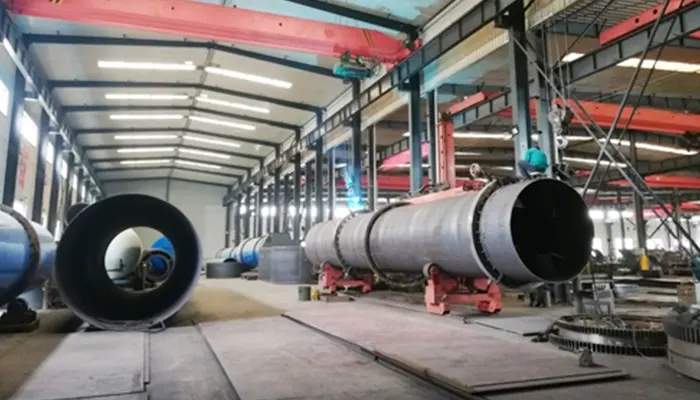
Safety Considerations for Overhead Crane Operations
Safety is paramount in any industrial setting, and pellet machinery plants are no exception. In this section, we'll explore the critical safety considerations for overhead crane operations.
- Importance of Safety: Safety in crane operations is essential to protect personnel and equipment from accidents and injuries. By prioritizing safety measures, pellet machinery plants can create a secure working environment and prevent potential hazards or mishaps.
- Compliance with Standards and Regulations: Compliance with relevant safety standards and regulations, such as those set forth by OSHA (Occupational Safety and Health Administration) and ANSI/ASME (American National Standards Institute/American Society of Mechanical Engineers), is imperative. Adhering to these standards ensures that overhead crane operations meet established safety protocols and guidelines.
- Training and Certification: Proper training and certification are essential for crane operators to ensure competency in handling overhead crane equipment. Operators should undergo comprehensive training programs that cover crane operation techniques, safety procedures, and emergency protocols. Certification programs validate operators' skills and knowledge, confirming their ability to operate cranes safely and effectively.
Common Safety Features:
Overhead cranes are equipped with various safety features designed to prevent accidents and mitigate risks. Some common safety features include:
- Overload Protection: Systems that prevent cranes from lifting loads exceeding their rated capacity, reducing the risk of accidents due to overloading.
- Emergency Stop Buttons: Easily accessible buttons that allow operators to immediately stop crane movement in emergency situations.
- Limit Switches: Sensors that limit the crane's travel to prevent collisions with obstacles or overtravel beyond specified limits.
- Safety Interlocks: Mechanisms that prevent crane operation when certain conditions are not met, such as proper load attachment or crane positioning.
- Warning Systems: Visual or audible alarms that alert personnel to potential hazards, such as approaching crane movements or overhead loads.
By implementing and adhering to robust safety measures, pellet machinery plants can create a culture of safety, minimize the risk of accidents, and ensure the wellbeing of their workforce. In the next section of our guide, we'll discuss the installation and maintenance of overhead cranes to further enhance safety and reliability in pellet machinery plants.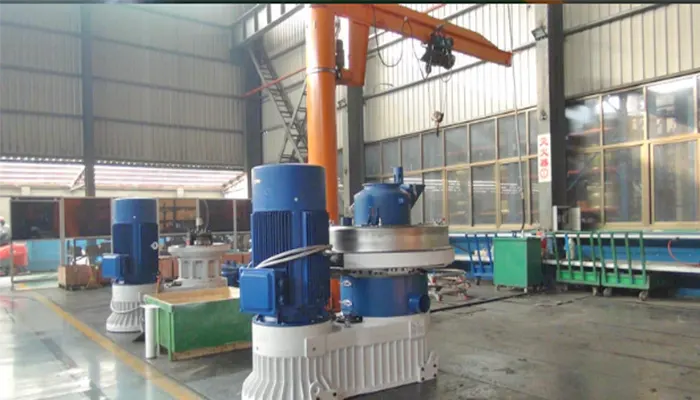
Installation and Maintenance of Overhead Cranes
Proper installation and regular maintenance are crucial for ensuring the safe and efficient operation of overhead cranes in pellet machinery plants. In this section, we'll discuss the key aspects of crane installation and maintenance.
Planning and Preparation for Crane Installation:
Before installing overhead cranes, careful planning and preparation are essential to optimize layout and workflow in pellet machinery plants. Considerations include:
- Layout Optimization: Determining the optimal crane placement to maximize material flow and minimize obstruction to production processes.
- Workflow Analysis: Assessing production workflows to identify areas where overhead cranes can improve efficiency and productivity.
- Infrastructure Requirements: Ensuring that the plant infrastructure, such as support structures and electrical systems, can accommodate the installation of overhead cranes.
- Safety Considerations: Addressing safety concerns and ensuring compliance with relevant regulations during the planning phase.
Installation Process and Considerations:
During the installation of overhead cranes, several factors must be considered to ensure optimal performance and safety:
- Rigorous Installation Procedures: Following manufacturer guidelines and industry best practices for crane installation to ensure structural integrity and stability.
- Calibration and Testing: Conducting thorough calibration and testing of crane components to verify functionality and performance.
- Routine Maintenance Tasks: Establishing a maintenance schedule for routine tasks such as lubrication, inspection of components, and adjustment of mechanisms to prevent breakdowns and ensure safety.
- Safety Measures: Implementing safety measures during installation to protect personnel and equipment, including the use of personal protective equipment (PPE) and adherence to safety protocols.
Troubleshooting and Repairs:
Despite proactive maintenance efforts, issues may arise that require troubleshooting and repairs:
- Prompt Response: Addressing issues promptly to minimize downtime and prevent disruptions to production operations.
- Conducting Inspections: Regular inspections of crane components and systems to identify potential issues before they escalate.
- Compliance with Maintenance Standards: Ensuring compliance with maintenance standards and regulations to maintain crane safety and performance.
- Collaboration with Experts: Consulting with crane manufacturers or certified technicians for complex repairs or technical issues beyond the plant's expertise.
By prioritizing proper installation procedures and implementing proactive maintenance practices, pellet machinery plants can optimize the performance and longevity of overhead cranes, ensuring safe and efficient material handling operations.
Conclusion
In conclusion, overhead cranes play a vital role in the success of pellet machinery manufacturing plants by facilitating efficient material handling and production processes. Throughout this comprehensive guide, we've explored various aspects of overhead crane usage in pellet machinery plants, emphasizing the importance of safety, efficiency, and productivity.
Key Points for Takeaway
- We've discussed the definition and function of overhead cranes, highlighting their essential role as lifting equipment in manufacturing environments.
- Different types of overhead cranes commonly used in pellet machinery plants were explored, including single girder vs. double girder, top running vs. under running, and bridge, gantry, and jib cranes.
- Components of overhead cranes, such as hoist and trolley, bridge, end trucks, controls, and safety features, were outlined to ensure smooth and safe operation.
- An overview of pellet machinery components and production procedures underscored the importance of efficient material handling in maximizing productivity.
- Factors to consider when selecting overhead cranes, such as load capacity requirements, span and coverage area, lift height, operating environment, frequency of use, and integration with existing infrastructure, were discussed in detail.
- Crane operation techniques and safety considerations were highlighted to ensure safe and efficient material handling in pellet machinery plants.
- Installation, maintenance, and troubleshooting guidelines were provided to optimize crane performance and longevity.
- Realworld case studies, lessons learned, and best practices offered valuable insights into successful overhead crane implementation and optimization strategies.
- Innovative solutions and technologies were explored to further enhance overhead crane functionality and efficiency in pellet machinery plants.
Final Considerations and Recommendations:
- As we conclude, it's essential to prioritize safety, efficiency, and productivity in overhead crane usage within pellet machinery manufacturing operations.
- Pellet machinery plants should invest in comprehensive training programs for crane operators, proactive maintenance schedules, and continuous improvement initiatives to optimize crane performance.
- By selecting the right type and capacity of overhead cranes, implementing advanced safety features, and leveraging innovative technologies, pellet machinery plants can enhance material handling processes, minimize downtime, and achieve higher levels of productivity.
In essence, overhead cranes are indispensable assets in pellet machinery manufacturing plants, driving operational excellence and contributing to overall business success. By following the guidelines and recommendations outlined in this guide, pellet machinery plants can harness the full potential of overhead cranes to meet the demands of a dynamic and competitive industry landscape.


